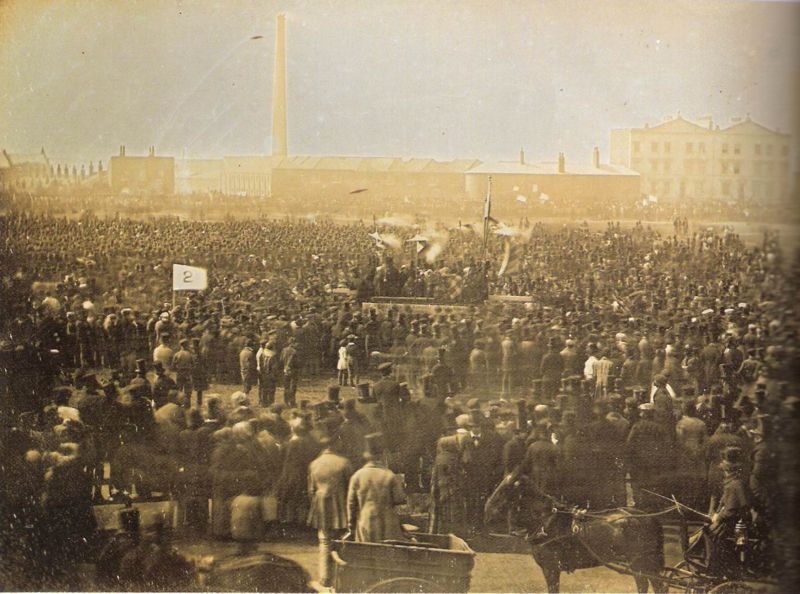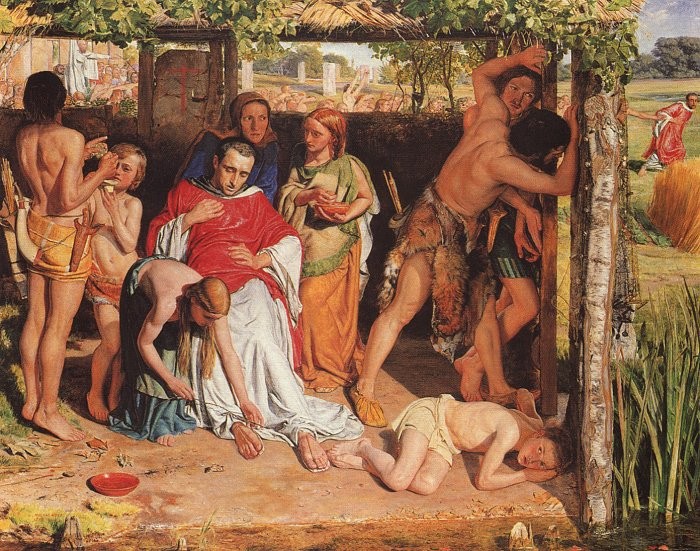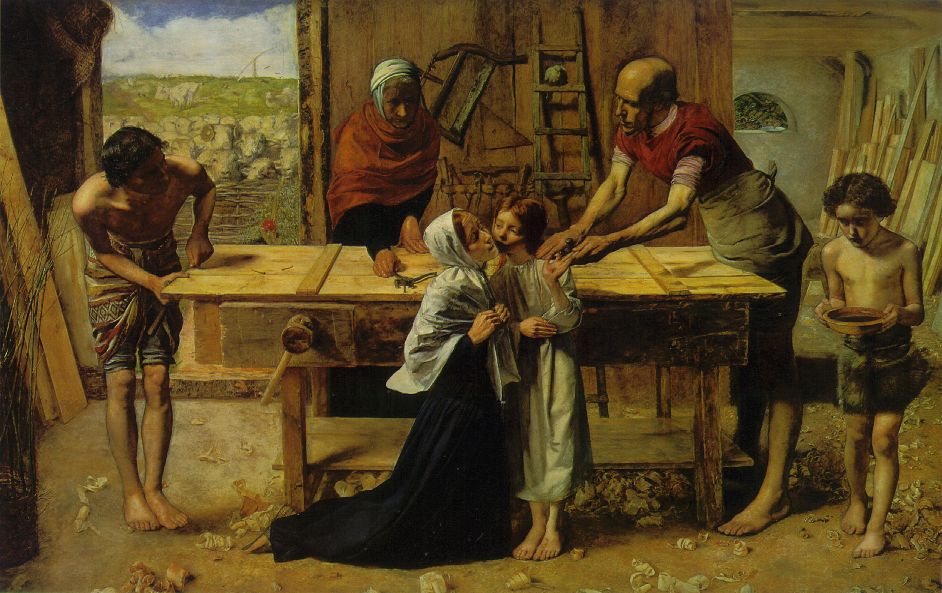The period was a time of revolutions. The French Revolution was 1789 and uprisings took place across Europe in 1848. In the UK, the Chartist movement consisted of workers who had not been enfranchised by the Great Reform Act of 1832. The Chartists wanted,
- a vote for all men (over 21),
- a secret ballot,
- no property qualification to become an MP,
- payment for MPs,
- electoral districts of equal size, and
- annual elections for Parliament.
All male householders were enfranchised in the Second Reform Act of 1867. This was further improved for men in 1884 although 40% of males were still not eligible.Women did not receive the same voting rights as men in the UK until 1928.
Photograph of the Chartist meeting in Kennington Common, 1848.
Relevant publications include:
- Declaration of the Rights of Man, 1789
- Edmund Burke, Reflection on the Revolution in France
- Thomas Paine, Rights of Man, 1791
- People’s Charter, 1848
- Thomas Carlyle, Heroes and Hero Worship, 1843
- Thomas Carlyle, Past and Present, 1843
- Thomas Carlyle, The French Revolution a History, 1837
The middle class were very nervous at the time that the Chartist movement would led to a general uprising and revolution. One important writer of this period was Thomas Carlyle, who move have had more influence over the Pre-Raphaelites than John Ruskin. The issue that was being debated was the nature of authority and the role of the individual in society. Thomas Carlyle wrote about these issues although today we find his writing paternalistic (as was Ruskin).
The Pre-Raphaelites were questioning authority in the art world, in particular the Royal Academy, it was therefore a radical and secret group. Rossetti’s father was a political refugee from Italy. It is alleged (by Hunt) that he and Millais attended the Chartist meeting in Kennington.
Ernest Jones, 1848, was a leading light in the Chartist movement and a poet who wrote the Painter of Florence. This poem talks about the problems of life but how he was distracted by the beauty of early Italian painting:
Then to the panels
roved my eye,
In search of better company,
And asked those paintings, nobly wrought,
To tell me their creator’s thought;
Then those pictures dim and grey
Led my fancy far away.
Steel-clad knights, and bodiced dames
Leaning thro’ their stately frames,
With their cold, eternal gaze
From the depth of other days.
but then how he rejected it for the real world:
And when Florence had fallen and bowed the knee
To the golden pride of the Medici,
Then princes and bishops and cardinals tore
From her temples and trophies their coveted store;
And hung on the wall
Of their selfish hall,
What was meant for the eyes and the hearts of all.
Thus past the picture from hand to hand,
Till it wandered away to a cloudy land,
And I found it lost in the barren-gloom
Of a country gentleman’s dining-room.
The monastic model involved a group rejecting the rough and tumble of the modern
world to retreat into a quiet place to contemplate. ‘Artistic quality of labour,’ Henry Mahew, 1851, the notion, role, value and nature of work and finding a morality in work. These ideas are linked to the ideas of the Chartists. PRB painting is itself an example of very hard work or at least painstaking work. It is not bravura like Etty or Reynolds but an example itself of the Victorian work ethic applied to painting. These ideas are also associated with Ruskin’s letter to The Times in 1851, he recognised the work involved and thought they should be seriously considered rather than being dismissed out of hand, although he had little sympathy with what he saw as the Catholic themes.
Eye/I
The idea of the individual and the way the individual is treated by society – the big revolutionary question. Nochlin, The Body in Pieces is a book that associates the fragment, particularly the body fragment, with revolution and the start of modern society. At one level we have the guillotine and paintings of heads and arms and this can be generalised to the eye disassociating the world by intense looking, which involves seeing a part rather than the whole. Once you look the world fragments and wholeness is lost.
The Germ (1850, four issues). Was it a political magazine, to the extent that it was published and advocates an alternative approach to that of established authority it was a political act. If we look at the drawings produced by Hunt and Rossetti and the Cyclographic Society we see examples of cut off heads, unstable angles, books about to fall and other unstable features.
William Holman Hunt. A Converted British Family sheltering a Christian Priest
from the Persecution of the Druids, 1849-50. Oil on canvas, 43 3/4 x 52 l/2 in.
In 1849 the RA Gold Medal theme was an act of mercy with at least two naked figures but without a landscape. Hunt followed the guidelines but did add a landscape so was not considered for the Gold Medal but the painting was accepted for the Summer Exhibition. It was painted on the Lee Marshes in the open air. Elizabeth Siddal is the woman gazing at the priest. Hunt advertised for gypsies on Clapham Common and the women behind the priest is one who replied. There is a great deal of symbolism, such as the vine and corn demonstrating the civilizing effects of Christianity. The dress of the priest is actually inaccurate for the 3rd century AD. His red cloak refers to divine charity and martyrdom and the priest in the background being pursued is also wearing a red cloak. It relates to the conflict between the Tractarians and the Evangelists.
Note the tender gaze of the young woman on the priest. The boy is intent on listening and note his strange waxy coloured skin, this is actually the scrawny white body of a boy that has not been in the son (compare with the white body of Manet’s Olympia 15 years later. A girl is pulling a bramble from the foot of the priest signifying the crown of thorns. Grape juice is being poured into a cup, a reference to the Eucharist. The priests pose reminds us of a pieta or a deposition. The missionary is a type for Christ (typological symbolism). The man is the loin cloth is a type for John the Baptist. The fishing nets outside have biblical resonances. The model for the priest was William Michael Rossetti, an Italian looking man.



